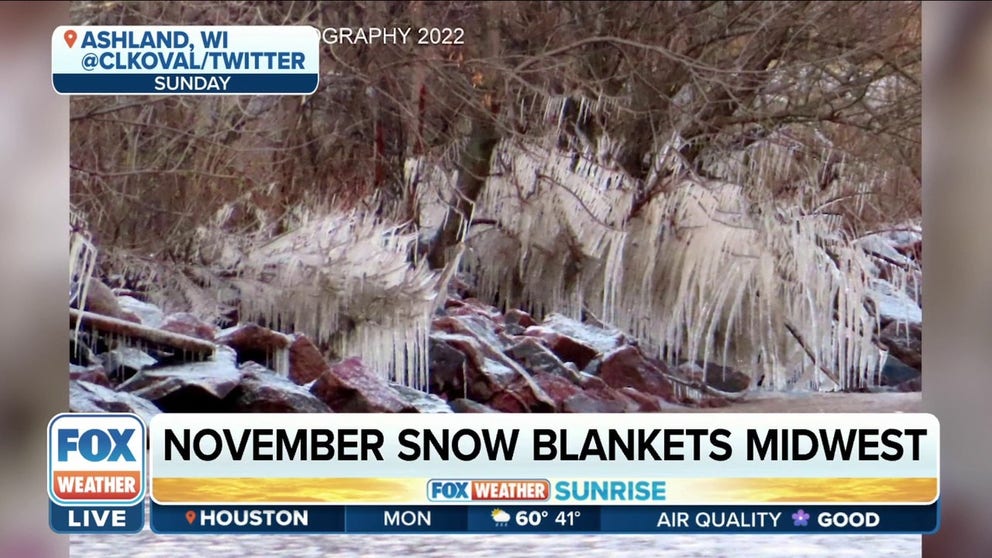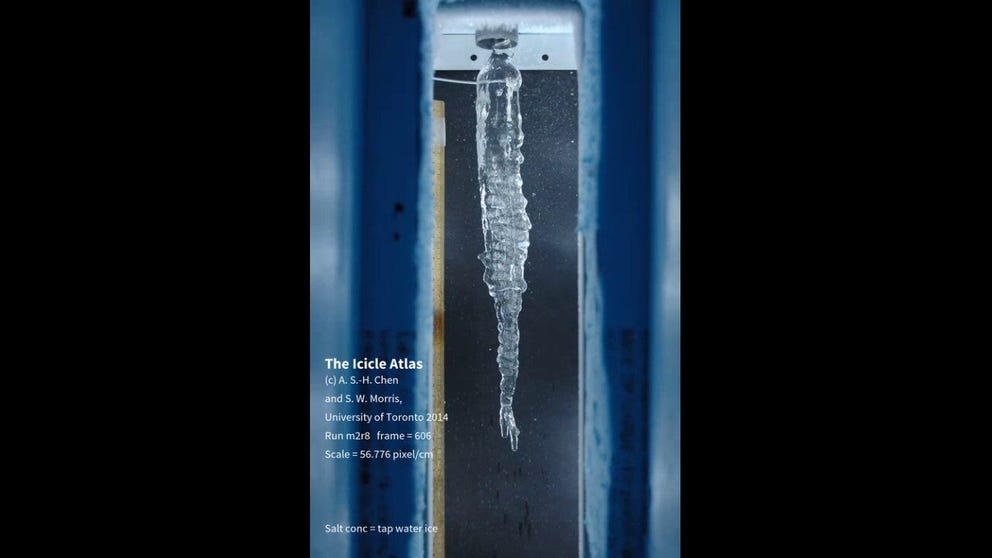How do icicles form, and why do they perplex physicists?
Seemingly simple icicles hold tight to their frozen secrets confounding scientists
Amazing icicles
Winter wonderlands would not be complete without icicles. Check out some of the impressive ones in Ashland, Wisconsin.
Icicles are everywhere in the winter. They hang from gutters, trees, waterfalls and even from beards. We can even make one ourselves at home, given the right temperature. So why does this seemingly simple icy spike stymie scientists? How does an icicle form, and why does it look like a bumpy carrot?
"The question that's been obsessing me for all these years is what tells an icicle what's shape to be?" said Stephen Morris, Professor Emeritus at the University of Toronto. "How does an icicle know what shape to be? There's nothing outside the Icicle that informs it that it should be long and pointy, it just decides to be long and pointy, and how does it decide, and that's a physics question."

Icicles follow the same mysterious laws of physics on a biathalete's beard.
( Gabe Souza/Portland Portland Press Herald / Getty Images)
The University of Toronto researcher alone spent 10 years, so far, growing thousands of icicles, taking 230,000 photos and making 400 movies to admit he and his department of physics colleagues didn’t know. So, they released all their findings to the public in the Icicle Atlas.
"So after we had done this detailed study, we were left with a large amount of data. And we still don't understand it," Morris said. "So what should we do? Well, the answer I came up with was to give it away because maybe somebody else will figure it out."
PHOTOS: MASSIVE ICICLES HANG OUT AMID ARCTIC BLAST IN PACIFIC NORTHWEST
Massive icicles hang from destroyed Ukrainian school
A several-day stretch of freezing weather in Ukraine has left surreal scenes amid the damage caused by Russia's military invasion. Amid the rubble were feet-long icicles caused when water streamed from broken pipes, then froze. (Video courtesy: Alex Lourie via Storyful)
Here is what they know:
How can water still drip in below-freezing temperatures down a long icicle?
Icicles form from dripping water in below-zero temperatures. A poorly insulated home or the sun will melt snow on the roof. Water dripping from an edge will freeze in the below-freezing air. Another drop follows and freezes again. We all know that part, sort of.
The outside of an icicle is actually covered in a thin film of water, which causes it to be so slippery.
HOW TO WATCH FOX WEATHER ON TV
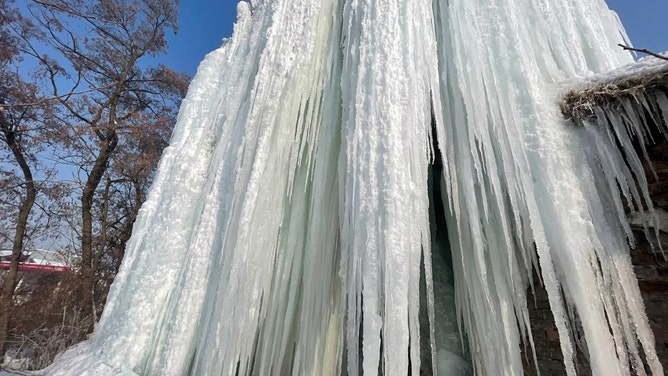
Icicles rimming a water tank.
(Abdullah Soylemez/Anadolu Agency / Getty Images)
As water, a liquid, freezes onto a solid, the molecules release heat – the latent heat of fusion. Molecules move around less in a solid than in a liquid, so they release that energy or latent heat.
The latent heat keeps the film of liquid from freezing and also transfers that heat to the air around the icicle, which rises. So water flows down, and warm air flows up, which accounts for the long pointy shape thicker at the top.
Morris did learn that icicles formed in still air have split tips. He keeps his lab at the ideal temperature for formation between 14 and 4 below zero Fahrenheit.
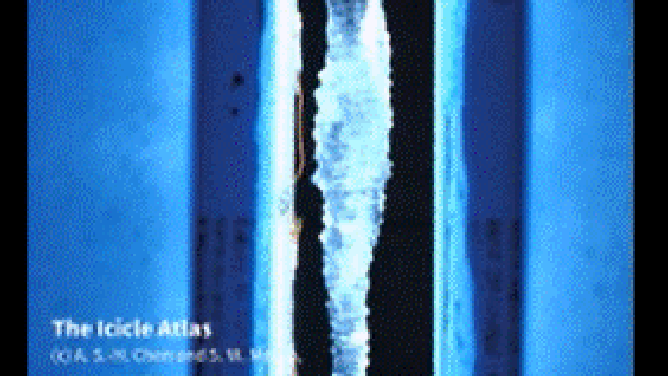
This icicle produced in Morris' lab with no wind has a split tip.
(The Icicle Atlas, University of Toronto / FOX Weather)
What scientists don’t know:
Why are all the bumps in the same pattern?
Take a look at an icicle. See the bumps or ripples around it? Each one is about one centimeter from the next one. It doesn’t matter how big or small the icicle is. It doesn’t matter how thick the bumps are, they are always in the same pattern.
No matter what is in the water, the temperature or the wind or any other variable, the bumps are always a centimeter from each other.
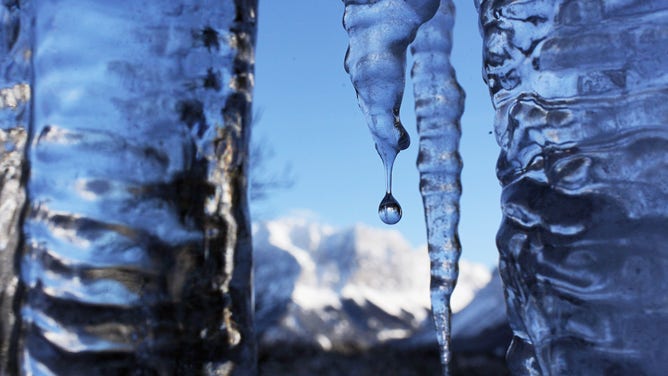
Icicles produce ripples with centers almost 1 centimeter apart.
(Johannes Simon / Getty Images)
"So if you're ever out in the woods, and you've lost your meter stick, you can just break off the nearest icicle, and you know, it makes a pretty good meter stick," joked Morris.
Stalactites in caves have the exact same pattern, which follows a mathematical equation. Scientists just don't know why it happens.
Stalactites and icicles are both formed from dripping water that contains dissolved salts and minerals. But that is where the similarities stop. While the frozen water makes up an icicle, minerals make up a stalactite. As water drips in a cavern, it deposits minerals on the stalactite, which form the structure.

Stalactites have the same ripple pattern as icicles.
(Sergio Pitamitz / VWPics/Universal Images Group / Getty Images)
Why do impurities make the bumps?
We know there are bumps or ripples on an icicle, but why? Impurities like salt and minerals dissolved in the water drop create bumps. Scientists said icicles made from distilled water don’t have bumps, they are smooth like ice cubes.
And the research found that there is a correlation between the thickness of the bumps and the number of impurities in the water. The higher concentration of impurities nets fatter bumps. Even tap water has enough impurities to make a bumpy icicle. Scientists just don’t know why.
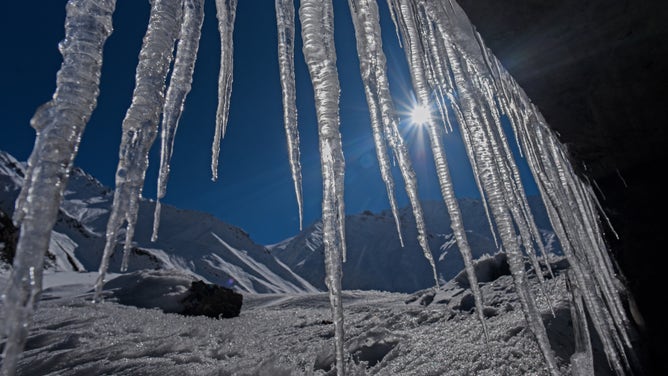
Icicles in Kargil, India.
(Waseem Andrabi/Hindustan Times / Getty Images)
Why do the ripples move?
The ripples continue to present more questions than answers. In time-lapse photos and videos, the ripples move.
Experiments showed that the ripples traveled up the icicle when the water had less concentration of impurities. Ripples traveled down with more impurities. The growing ice actually forms above or below the ripple. Again, scientists just don’t know why.
Icicle ripples
Morris made an icicle from Toronto tap water in his lab. The ripples appear to move up because the ice growth is on top of each ripple. Courtesy: The Icicle Atlas
The hard lesson learned
Morris and his colleagues are not giving up, a new study comes out this week.
"What did we really learn? Well, every physics experiment is a humbling experience, even when it works. So the first thing we learn is humility," explained Morris.
"When you pay very close attention to something, like an icicle, you learn that you don't know everything," Morris continued. "In particular, we learned that even an icicle holds a huge depth of phenomena which we had no idea about."
So this winter, look around at the icicles and marvel at the mysteries frozen inside.
